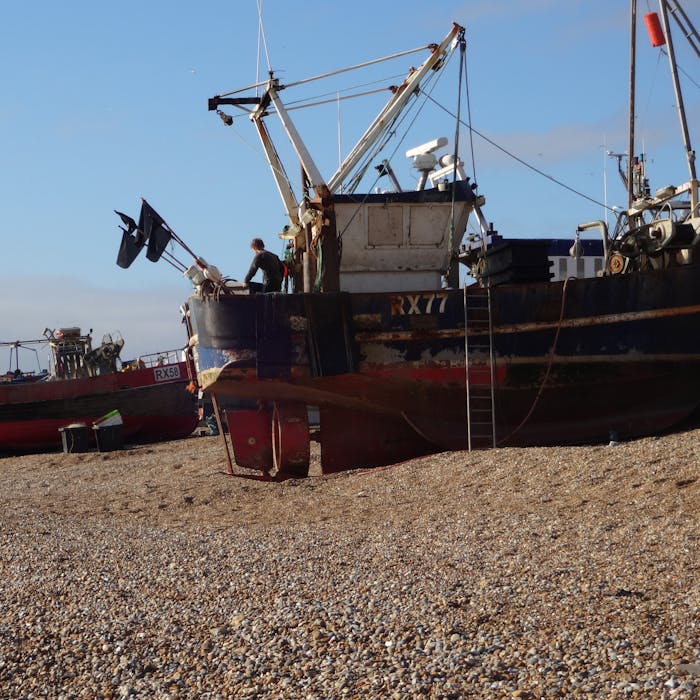
The fishing boats of Hastings - largest beach-launched fishing fleet in Europe
The town of Hastings, on England's south coast in Sussex, is home to Europe's largest fleet of beach-launched fishing boats. The pebble beach here has been used for beaching boats for more than a thousand years.
The fishing boats are hauled from the sea after each trip, rather than left floating in a harbour - as is more usual. This is done with the help of winches or tractors, and means the boats are limited in length to about ten metres. They can only carry small amounts of gear and travel just a few miles, which results in a fishing fleet that is considered more ecologically sound than most.
The boats are registered with the letters RX (meaning Port of Rye - which is just down the coast). Any boats with a different prefix are visitors from elsewhere.
The motorised winches for each boat are housed in a row of low black sheds (winch huts) to the south of the appropriately named Winch Hut Road. In days gone by, they were wound up the beach with a capstan, usually with the aid of a horse walking in circles attached to a horizontal spar of the capstan. These capstans were robustly built and attached by a chain to a large boulder (a frapping stone) buried beneath the shingle to prevent the capstan being pulled down the beach when the boats were pulled up.
Another interesting feature of the history of the fishing fleet are the presence of the distinctive "Net Shops". These are tall black wooden sheds which were built to provide a weather proof store for the fishing gear. The sheds are tarred (hence the colour) and weatherboarded.
A common misconception is that the sheds were used for drying the nets, hence the height. This is incorrect: nets were dried on the beach, and the sheds were built for net storage – the height is due to limited space, and inside the sheds have always had multiple floors.
Though many of the Net Shops were destroyed over time to make way for other civic projects, enough remain to add to the distinctive charm of this area of the beach.
Fish is sold to the public in the morning from makeshift shops in the winch huts and throughout the day (more expensively) from dedicated fishmongers on the public roadway running beside the beach. Visitors to the area can also, of course, enjoy many fish and chip, and fish restaurants, as well as an aquarium, Fishermen’s Museum (in the former fishermen's chapel), funicular railway, and Shipwreck Museum.
Further reading
Links to external websites are not maintained by Bite Sized Britain. They are provided to give users access to additional information. Bite Sized Britain is not responsible for the content of these external websites.
